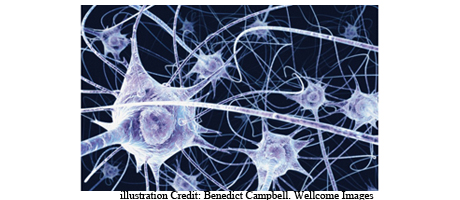A new institute at GW will advance research and learning in neuroscience across the university.
The Institute for Neuroscience will be housed in GW’s School of Medicine and Health Sciences and led by Anthony-Samuel LaMantia, an internationally renowned researcher formerly at the University of North Carolina at Chapel Hill.
The institute will serve as a unified base for neuroscience research at GW, coordinating efforts among faculty, post-doctoral fellows and students at the Foggy Bottom Campus and Children’s National Medical Center.
“I think it is really remarkable that GW, in a time when many academic institutions are retrenching, is committing to developing new research enterprises,” says Dr. LaMantia. “I hope that we can build the sort of community of neuroscientists that stimulates important new research in what I believe to be one of the most exciting and essential biomedical research issues—how our brains work and how things can go wrong.”
The institute’s initial goals include working to recruit four new faculty members in the neurosciences and organizing a new graduate course in the neurobiology of developmental disorders. It will serve as a central forum for initiating multi-investigator projects.
In addition, the institute plans to sponsor a neuroscience seminar series and create a dedicated website.
“The Institute for Neuroscience represents a major step forward in our efforts to expand our research enterprise at GW,” says Vice President for Research Leo Chalupa.
“It’s critical for us to have a collection of scientists who will conduct outstanding research on the most challenging issues that affect the human brain, and we are fortunate to have someone of Dr. LaMantia’s stature in the field of neuroscience to lead the institute.”
In addition, the institute will establish a new facility, the Biomarkers Discovery and Analysis Core, to support research efforts across the GW neuroscience community and beyond. The core services provide facilities and expert assistance to identify how and where genes are expressed in the developing and adult brain.
The institute has also established new facilities for studying neural stem cells and other cell lines, and for manipulating gene expression in nerve cells in culture. “These approaches have become essential tools in the effort to understand how the genome controls the way the brain develops and the way that nerve cells work,” says Dr. LaMantia. “The facilities to do this sort of work are difficult for individual investigators to set up on their own, and the institute’s resources will facilitate access to these technologies to enhance ongoing research efforts by GW investigators.”
Currently, the institute includes 24 faculty members, whose research interests include behavioral, evolutionary, systems, cellular and developmental neuroscience. The School of Medicine and Health Sciences, the Columbian College of Arts and Sciences and the Office of the Vice President for Research jointly support the institute’s programs.
“The new Institute for Neuroscience reflects the spirit of collaboration that is essential in today’s scientific research,” says John Williams, vice president for health affairs at GW Medical Center. “By combining the talents of faculty, the institute can produce cutting-edge research that may answer the most difficult questions in the neurosciences.”


